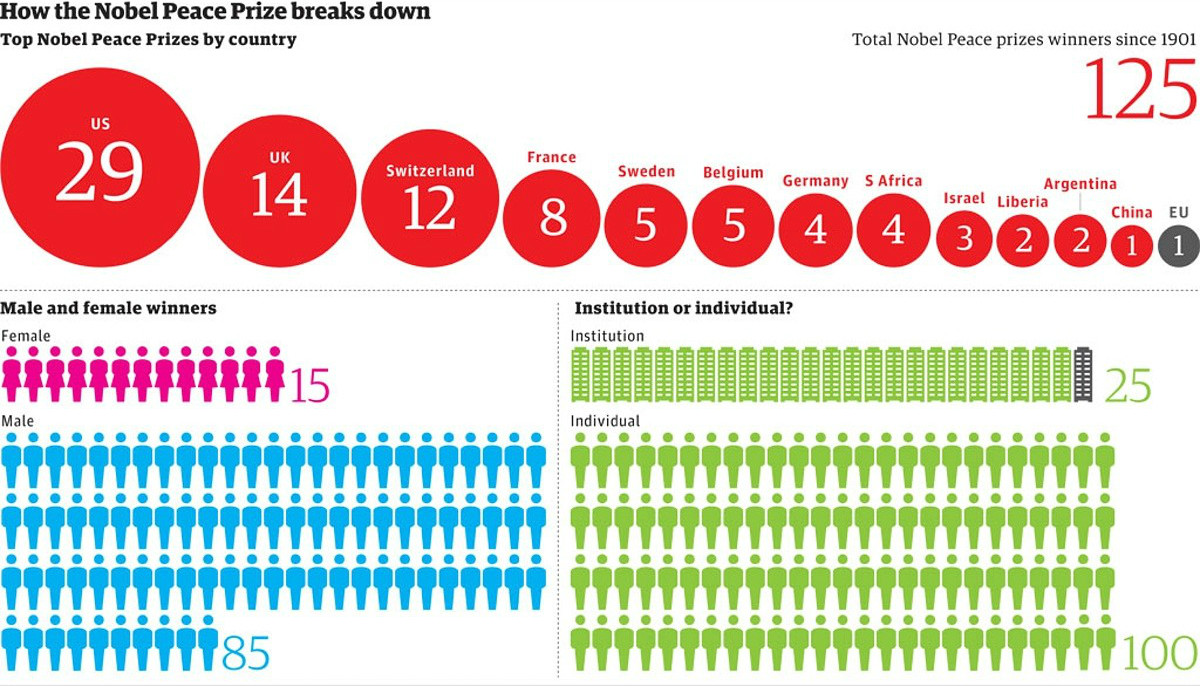The Nobels: New Faces, Same Story
By Jessica Canchola
What do Sweden’s Tomas Lindahl and Turkey’s Aziz Sancar have in common? In addition to winning this year’s Nobel Prize in chemistry for their contributions to cell DNA protection and repair with American Paul L. Modrich, they are also part of a growing group of winners challenging previous American dominance in the field. Gone are the days of undisputed American hegemony in scientific innovation. Many describe a globalizing trend sweeping over the sciences, reflected in the diverse nationalities of this year’s Nobel Prize honorees for medicine and physics. Let’s take a further look.
Since the awards’ inception in 1901, over 1,000 Nobel awards have been awarded to people from around the globe who have made meaningful contributions in the fields of chemistry, literature, medicine, physics and peace. An overwhelming majority of Nobel prizes across these five categories have been given to thinkers from western countries - 83 percent to be exact, according to a 2013 study. A whopping 347 of those laureates have hailed from the United States, beating out both Britain (120) and Germany (104) handily, along with swaths of other countries from South America, Eastern Europe, Africa, the Middle East, and Asia whose laureate counts mostly hover around twenty.
The pattern of western dominance in winning Nobels in not wholly surprising. While western preponderance is at least partially attributable to the highly opaque and seemingly arbitrary selection process, other observers have also credited the United States, Britain, and Germany’s “big lead during the prize’s first decades” to the presence and subsequent remnants of colonization. And despite Cold War-fueled gains made by Eastern Europe mid century and a general distribution of geopolitical and economic power across the globe, the West’s lead has persisted - especially in the United States in the field of chemistry. With only the exceptions of 2007 and 2011 an American has won part or all of every Nobel given in the discipline. But this trend is quickly changing, as Sancar and Lindahl’s win exemplify and the nationalities of the winners for the medicine and physics award also prove.
However, to say that globalization is sweeping across the sciences is simply overstated. Consider where Lindahl, Modrick, and Sancar’s research was conducted. Modrich and Sancar made their findings at Duke University and the University of North Carolina, Chapel Hill respectively - American institutions while Lindahl’s research was achieved across the pond at the Francic Crist Institute at Clare Hall Laboratory in London. Although each of the winners come from different countries, their findings are still tied to the advanced scientific communities of the western developed world. Despite Lindahl and Sancar’s countries of origin their wins can be viewed as just as much of a testament to the “research strength” of American and British programs as they are a nationalistic triumph for the pair’s respective homelands.
Although the Nobel Prizes have celebrated great leaps and bounds in the field of chemistry over its 100 years of existence, the epicenters of this knowledge are still concentrated in the West. We may know more now about the atom and the cell than we did in 1901 but in some ways the world beyond them them has hardly changed.

